I'm not sure it makes sense to try and use textures directly with thrust. However using an ordinary GL pixel buffer can be made to work directly with thrust.
The following example creates an openGL pixel buffer with a particular green/black pattern, and then displays it. When you press the space bar, the pixel buffer will be made available to CUDA via CUDA/OpenGL interop, and then a thrust sort (in-place) function is called. After the sort, the sorted pixel data is displayed again. The pixel data never leaves the GPU.
Here's the sample code:
#include <stdio.h>
#include <stdlib.h>
#include <string.h>
#include <GL/gl.h>
#include <GL/glut.h>
#include <cuda_gl_interop.h>
#include <GL/glext.h>
#include <GL/glx.h>
#include <thrust/device_ptr.h>
#include <thrust/sort.h>
#define GET_PROC_ADDRESS( str ) glXGetProcAddress( (const GLubyte *)str )
static void HandleError( cudaError_t err, const char *file, int line ) {
if (err != cudaSuccess) {
printf( "%s in %s at line %d\n", cudaGetErrorString( err ), file, line );
exit( EXIT_FAILURE );
}
}
#define HANDLE_ERROR( err ) (HandleError( err, __FILE__, __LINE__ ))
PFNGLBINDBUFFERARBPROC glBindBuffer = NULL;
PFNGLDELETEBUFFERSARBPROC glDeleteBuffers = NULL;
PFNGLGENBUFFERSARBPROC glGenBuffers = NULL;
PFNGLBUFFERDATAARBPROC glBufferData = NULL;
#define DIM 512
GLuint bufferObj;
cudaGraphicsResource *resource;
struct sort_functor
{
__host__ __device__
bool operator()(uchar4 left, uchar4 right) const
{
return (left.y < right.y);
}
};
// create a green/black pattern
__global__ void kernel( uchar4 *ptr ) {
// map from threadIdx/BlockIdx to pixel position
int x = threadIdx.x + blockIdx.x * blockDim.x;
int y = threadIdx.y + blockIdx.y * blockDim.y;
int offset = x + y * blockDim.x * gridDim.x;
// now calculate the value at that position
float fx = x/(float)DIM - 0.5f;
float fy = y/(float)DIM - 0.5f;
unsigned char green = 128 + 127 * sin( abs(fx*100) - abs(fy*100) );
// accessing uchar4 vs unsigned char*
ptr[offset].x = 0;
ptr[offset].y = green;
ptr[offset].z = 0;
ptr[offset].w = 255;
}
static void draw_func( void ) {
glDrawPixels( DIM, DIM, GL_RGBA, GL_UNSIGNED_BYTE, 0 );
glutSwapBuffers();
}
static void sort_pixels(){
cudaGraphicsMapResources( 1, &resource, NULL );
uchar4* devPtr;
size_t size;
cudaGraphicsResourceGetMappedPointer( (void**)&devPtr, &size, resource);
thrust::device_ptr<uchar4> tptr = thrust::device_pointer_cast(devPtr);
thrust::sort(tptr, tptr+(DIM*DIM), sort_functor());
cudaGraphicsUnmapResources( 1, &resource, NULL );
draw_func();
}
static void key_func( unsigned char key, int x, int y ) {
switch (key) {
case 27:
HANDLE_ERROR( cudaGraphicsUnregisterResource( resource ) );
glBindBuffer( GL_PIXEL_UNPACK_BUFFER_ARB, 0 );
glDeleteBuffers( 1, &bufferObj );
exit(0);
break;
case 32:
sort_pixels();
break;
default:
break;
}
}
int main(int argc, char *argv[]) {
cudaGLSetGLDevice( 0 );
glutInit( &argc, argv );
glutInitDisplayMode( GLUT_DOUBLE | GLUT_RGBA );
glutInitWindowSize( DIM, DIM );
glutCreateWindow( "sort test" );
glBindBuffer = (PFNGLBINDBUFFERARBPROC)GET_PROC_ADDRESS("glBindBuffer");
glDeleteBuffers = (PFNGLDELETEBUFFERSARBPROC)GET_PROC_ADDRESS("glDeleteBuffers");
glGenBuffers = (PFNGLGENBUFFERSARBPROC)GET_PROC_ADDRESS("glGenBuffers");
glBufferData = (PFNGLBUFFERDATAARBPROC)GET_PROC_ADDRESS("glBufferData");
glGenBuffers( 1, &bufferObj );
glBindBuffer( GL_PIXEL_UNPACK_BUFFER_ARB, bufferObj );
glBufferData( GL_PIXEL_UNPACK_BUFFER_ARB, DIM * DIM * 4, NULL, GL_DYNAMIC_DRAW_ARB );
cudaGraphicsGLRegisterBuffer( &resource, bufferObj, cudaGraphicsMapFlagsNone );
cudaGraphicsMapResources( 1, &resource, NULL );
uchar4* devPtr;
size_t size;
cudaGraphicsResourceGetMappedPointer( (void**)&devPtr, &size, resource);
dim3 grid(DIM/16,DIM/16);
dim3 threads(16,16);
kernel<<<grid,threads>>>( devPtr );
cudaGraphicsUnmapResources( 1, &resource, NULL );
// set up GLUT and kick off main loop
glutKeyboardFunc( key_func );
glutDisplayFunc( draw_func );
glutMainLoop();
}
compile like this:
nvcc -arch=sm_20 -o ogltest ogltest.cu -lglut
Here's what the display window looks like before sorting:

Here's what the display window looks like after sorting (after you press the space bar):

Note that we are sorting pixels based on the green component in this example.
You can press the ESC key to exit the app.
There are some updated versions of this sample code here.

